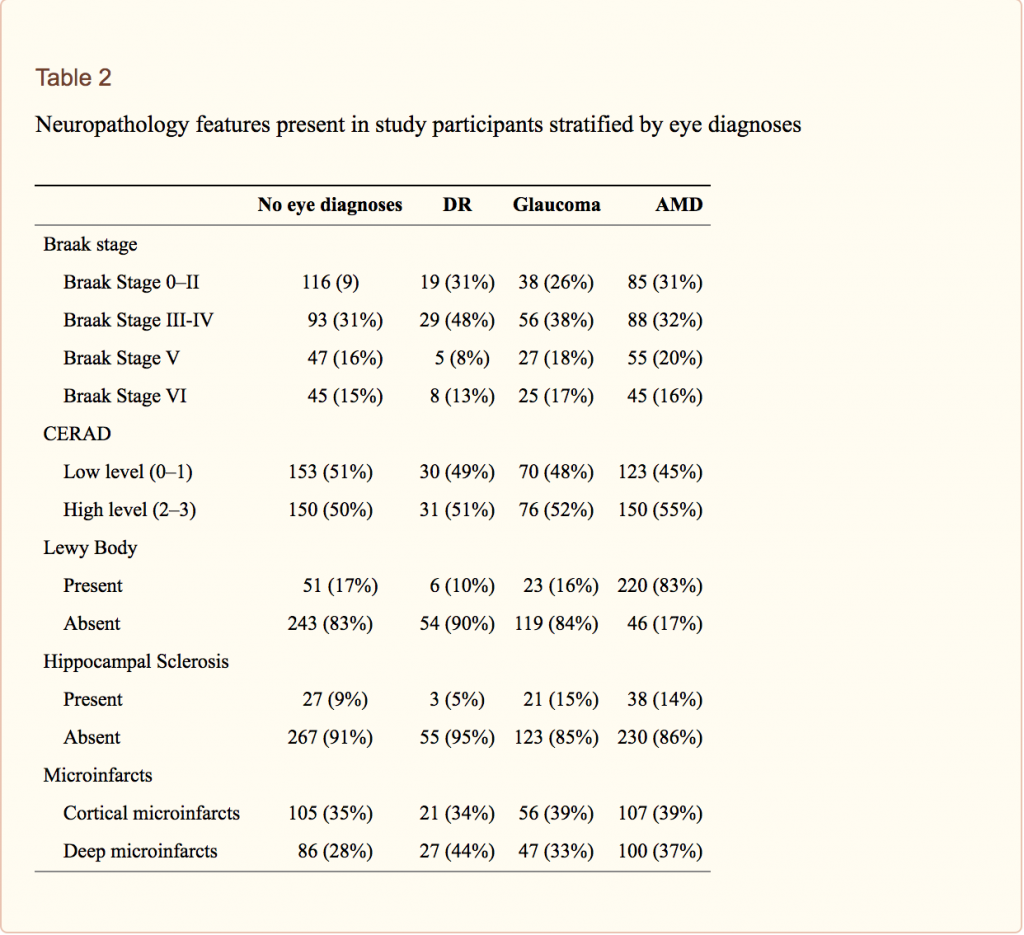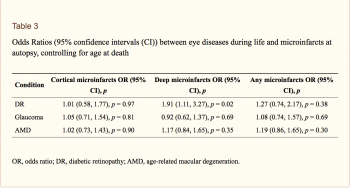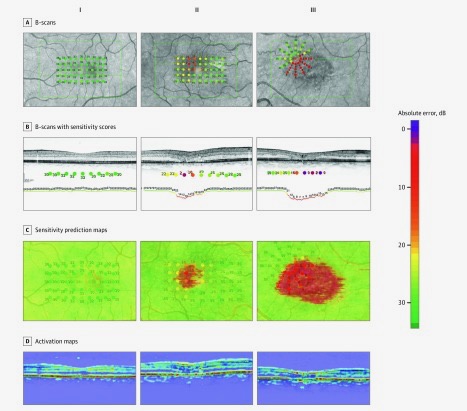In a recent Outlook commentary in the journal Nature, Dr. Aaron Lee discusses the use of artificial intelligence (AI) in clinical medicine - both the significant potential for this technology as well as the various limitations and ethical issues involved with its implementation. He specifically addresses the case of AI screening systems for diabetic retinopathy - the first of these has already been approved for use by the FDA - but the issues with these systems apply to other areas of clinical medicine beyond ophthalmology. Dr. Lee makes the case that as this technology improves, and especially with the potential for deep learning algorithms to "learn" from their mistakes, the benefits from using AI as a tool for physicians may outweigh the risks.
Continue reading "To Err is Both Human and AI"Ophthalmology-Based Neuropathology Risk Factors: Diabetic Retinopathy is Associated with Deep Microinfarcts in a Community-Based Autopsy Study.
The eye offers opportunities to capture critical information regarding the health of the brain, as the neurological anatomy and the microvasculature of the retina are very closely related to those of the brain and can be similarly affected by certain pathological processes. In this study published in the Journal of Alzheimer's Disease, Dr. Cecilia Lee and her co-authors compared brain neuropathology findings with known clinical information to determine if there were any associations between certain eye diseases and the presence of characteristic neuropathologic lesions of Alzheimer's disease. The authors analyzed the data from 676 patients from Adult Changes in Thought, a prospective longitudinal study in older patients who are followed over time and monitored for development of cognitive decline and dementia.

Generating retinal flow maps from structural optical coherence tomography with artificial intelligence
Advances in both imaging technology and artificial intelligence are enabling many new developments in the field of ophthalmology. Optical coherence tomography angiography (OCTA) is one such development. OCTA measures blood flow in retinal microvasculature and can visualize the superficial and deep capillary plexus of the retinal vasculature without the need for dye. But the technology is also expensive and has a limited field of view. In this study, we sought to develop a deep learning model that could address this issue by first learning to infer between structure and retinal vascular function from structural OCT images and then generating an OCTA-like image. This would allow for accurate objectively-generated annotations, eliminating the need for expert-defined labels, and potentially enable the acquisition of new information about retinal blood circulation from preexisting OCT databases.
Continue reading "Generating retinal flow maps from structural optical coherence tomography with artificial intelligence"Estimating Retinal Sensitivity Using Optical Coherence Tomography With Deep-Learning Algorithms in Macular Telangiectasia Type 2
Macular telangiectasia type 2 (MacTel) is a neurodegenerative disease affecting the parafoveal region of the retina, causing loss of central vision. Microperimetry testing is used to monitor progression of vision loss in patients with MacTel, during which multiple points on the retina are tested for sensitivity to light. Recent advances in imaging technology have correlated the focal light sensitivity defects that occur with MacTel to at least one structural defect, ellipsoid zone loss. We hypothesized that a deep learning model could be trained to estimate retinal sensitivity using structural details identified on optical coherence tomography (OCT) images and microperimetry data, providing a detailed high-resolution functional map of the retina that may be useful for research purposes or when microperimetry is not feasible.
Continue reading "Estimating Retinal Sensitivity Using Optical Coherence Tomography With Deep-Learning Algorithms in Macular Telangiectasia Type 2"Associations between recent and established ophthalmic conditions and risk of Alzheimer's disease
Alzheimer's disease affects millions of adults and is the most common type of dementia. Identifying risk factors for Alzheimer's may lead to early detection and preventive measures that are based on a better understanding of the disease processes involved. The eye provides substantial information on brain health, and may give some clues to the pathogenesis of Alzheimer's disease. Eye conditions such as glaucoma, age-related macular degeneration, and diabetic retinopathy have some shared characteristics with Alzheimer's disease, such as progressive neurodegeneration, characteristic amyloid beta deposits, and microvascular disease. This study aimed to investigate potential associations between four eye conditions (glaucoma, age-related macular degeneration, diabetic retinopathy, and cataract) with Alzheimer's disease in a large cohort of patients.
Continue reading "Associations between recent and established ophthalmic conditions and risk of Alzheimer's disease"



